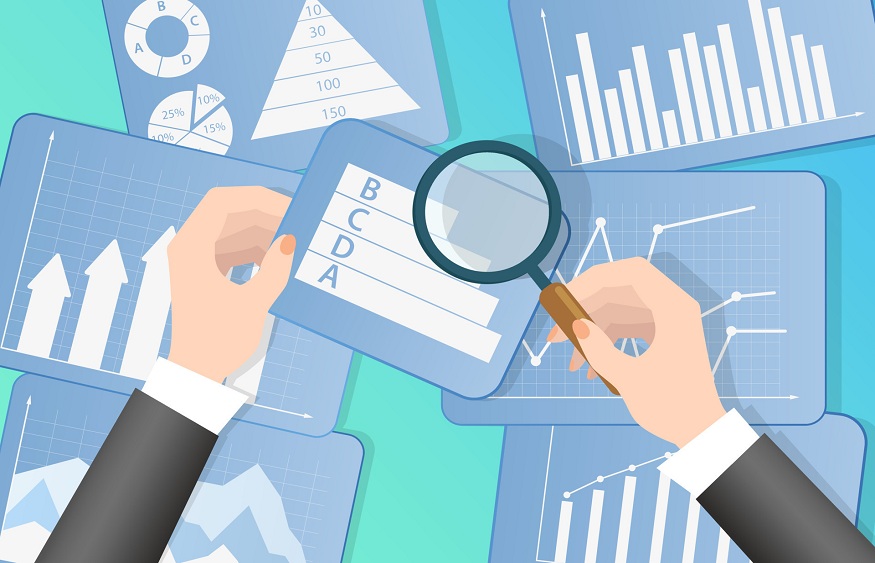Nowadays, businesses have become highly dynamic and brutal, if I’m being crude.
There was a time when we had the time and opportunity to wait for a while after launching a specific business strategy. It helped us understand its trajectory and find out if it would assist us in bringing more revenue in the future. But we don’t have the same freedom anymore.
Now, if you want to make your strategy succeed, you have to change it in real-time.
So, basically, if you’re doing business in 2023, you must stop reacting to a situation after it’s happened. Instead, you need to anticipate the same and prevent the wrong-doings quickly.
And this is where real-time analysis and business analytics come in clutch. Let us learn a bit more about them and find out how they are connected to each other.
Business Analytics and Real-Time Analysis – How Are They Connected?
Business analytics and real-time analysis are closely connected and often go hand in hand to provide valuable insights. If used properly, they can also enable data-driven decision-making in businesses and improve their growth trajectory even more.
Doesn’t sound too convincing, right? Wait, let me explain it to you.
A: Understanding the Connection Between BA and Real-Time Analysis
Imagine you’re the owner of a retail store, and you want to understand your customers’ purchasing patterns to optimize your inventory management and improve sales.
This is where business analytics comes into play.
You can start by examining historical sales data, customer demographics, and other relevant information. This analysis can uncover valuable trends, such as –
- Which products are popular among certain customer segments,
- The impact of promotions on sales, and
- Seasonal fluctuations in demand.
Armed with these insights, you can make informed decisions about inventory management, pricing strategies, and targeted marketing campaigns pretty easily.
However, the world of business moves fast, and relying solely on historical data might not be enough. This is where real-time analysis becomes crucial.
Real-time analysis involves monitoring and analyzing data as it is generated, allowing you to react quickly to changing market conditions and customer behaviors.
B: Decrypting the Aforementioned Example
In our retail example, real-time analysis can involve tracking customer interactions on your website or mobile app, monitoring social media for mentions of your brand, or analyzing data from in-store sensors and point-of-sale systems.
By leveraging real-time data, you can identify emerging trends, detect shifts in customer preferences, and respond promptly to opportunities or issues.
The connection between business analytics and real-time analysis lies in their combined power to provide up-to-date insights.
While business analytics helps you uncover historical patterns and make strategic decisions, real-time analysis empowers you to adapt and react in the present moment.
C: How Does Real-Time Analysis Enhance the Efficacy of BA
Moreover, real-time analysis can enhance the effectiveness of business analytics by providing a continuous feedback loop.
By incorporating real-time data into your analytics processes, you can –
- Validate or refine your existing models,
- Identify new correlations or patterns, and
- Improve the accuracy and relevance of your insights.
For example, if your business analytics models predict a surge in demand for a particular product during a holiday season based on historical data, real-time analysis can help validate this prediction by monitoring current sales data and customer behavior.
If the real-time data confirms the predicted trend, you can confidently adjust your inventory levels and marketing strategies. On the other hand, if the real-time data contradicts the prediction, you can quickly adjust your plans to avoid potential losses.
The ‘Business Analytics’ Process – A Step-by-Step Guide
The core process of business analytics can be quite varied. So the method you might use can differ from another person or organization. However, fortunately, there are some steps that’ll stay the same, no matter which you are taking. And that’s what I’m going to discuss here.
So, without any further ado, let’s get started with it.
Step 1: Defining the Problem or Objective
To begin the business analytics process, it’s important to clearly define the problem or objective you want to address.
This could be improving sales, reducing costs, enhancing customer satisfaction, or any other business challenge you’re facing. By establishing a clear goal, you’ll have a direction for your analysis.
Step 2: Data Collection
Once you have defined your problem, the next step is to gather relevant data.
This may involve collecting data from various sources such as internal databases, external market research reports, customer surveys, or any other data repositories.
The quality and comprehensiveness of your data will greatly impact the accuracy and reliability of your analysis.
Step 3: Data Cleaning and Preparation
Raw data often contains errors, inconsistencies, or missing values that can hinder the analysis process. In this step, you need to clean and preprocess the data.
This involves removing duplicates, correcting errors, filling in missing values, and transforming the data into a suitable format for analysis.
It’s essential to ensure data integrity and accuracy before proceeding further.
Step 4: Data Exploration and Visualization
Now that your data is clean and prepared, you can begin exploring it to gain insights.
This involves performing descriptive statistics, visualizing data through graphs or charts, and identifying patterns or trends.
Data exploration helps you understand the characteristics of your data, detect outliers, and uncover initial insights that may guide your analysis.
Step 5: Data Analysis and Modeling
In this step, you apply various analytical techniques to uncover meaningful insights.
You may use statistical analysis, data mining, predictive modeling, or machine learning algorithms depending on your objective and the nature of your data.
The goal is to discover relationships, correlations, or predictive patterns that can explain the phenomenon you’re investigating.
Step 6: Interpretation and Insights
Once you have completed the data analysis, it’s time to interpret the results.
This involves extracting meaningful insights, drawing conclusions, and connecting them to your initial problem or objective.
It’s crucial to communicate the findings in a clear and actionable manner, highlighting the implications for your business and potential courses of action.
Step 7: Decision Making and Implementation
Armed with the insights gained from the analysis, you can now make informed decisions and develop strategies to address the initial problem or objective.
These decisions may involve optimizing processes, adjusting marketing campaigns, improving customer experiences, or any other actions based on the analysis. The implementation of these decisions is key to driving positive business outcomes.
Step 8: Monitoring and Evaluation
Business analytics is an iterative process, and it’s important to monitor the impact of your decisions and evaluate their effectiveness.
This step involves tracking relevant metrics, comparing them against your objectives, and making adjustments as needed. Continuous monitoring and evaluation enable you to refine your strategies and drive ongoing improvements.
Note: Remember, business analytics is not a linear process, and iterations are common. So, as you progress through these steps, you may discover new insights or encounter unforeseen challenges. The key is to adapt, iterate and refine your analysis to achieve the best outcomes.
The Benefits of Using Business Analytics
Truth be told, business analytics can be quite a tiresome and time-consuming process. But, if you have done it correctly, it would be highly beneficial for you.
Keep reading to know more about it.
1: Improved Decision-Making
Business analytics empowers companies to make informed decisions based on data-driven insights. By analyzing large volumes of data, organizations can gain a deeper understanding of customer behavior, market trends, and operational inefficiencies.
This enables them to identify opportunities and address challenges proactively, leading to better decision-making at all levels.
2: Enhanced Operational Efficiency
By utilizing business analytics, companies can optimize their operations and processes. Analytics can help identify bottlenecks, streamline workflows, and improve overall efficiency. For example, analyzing supply chain data can lead to better inventory management, reduced costs, and improved delivery timelines.
3: Competitive Advantage
In today’s highly competitive business landscape, gaining a competitive edge is crucial. Business analytics provides organizations with valuable insights about their competitors, market trends, and customer preferences.
By leveraging this information, companies can develop effective strategies, launch targeted marketing campaigns, and create innovative products or services that meet the evolving needs of their customers.
4: Improved Customer Experience
Understanding customer behavior and preferences is essential for delivering exceptional customer experiences. Business analytics enables companies to analyze customer data, such as purchase history, browsing patterns, and feedback, to identify patterns and trends.
This information can be used to personalize marketing efforts, tailor product offerings, and optimize customer support, ultimately enhancing the overall customer experience.
5: Risk Mitigation
Every business faces risks, be it financial, operational, or market-related. Business analytics can help organizations identify and mitigate potential risks by analyzing historical data, identifying patterns, and forecasting future outcomes.
This allows companies to take proactive measures to minimize risks, make informed decisions, and optimize resource allocation.
Bonus: Innovation and Growth
Business analytics can act as a catalyst for innovation and growth. By analyzing market trends, customer feedback, and emerging technologies, organizations can identify new opportunities for growth and develop innovative products or services.
Analytics can also help identify untapped market segments, allowing companies to expand their customer base and increase market share.
The Bottom Line
Overall, business analytics has the potential to transform businesses by providing actionable insights, optimizing operations, enhancing customer experiences, and driving growth.
It’s not just about analyzing data; it’s about leveraging that data to make better decisions and stay ahead in today’s dynamic business environment.






